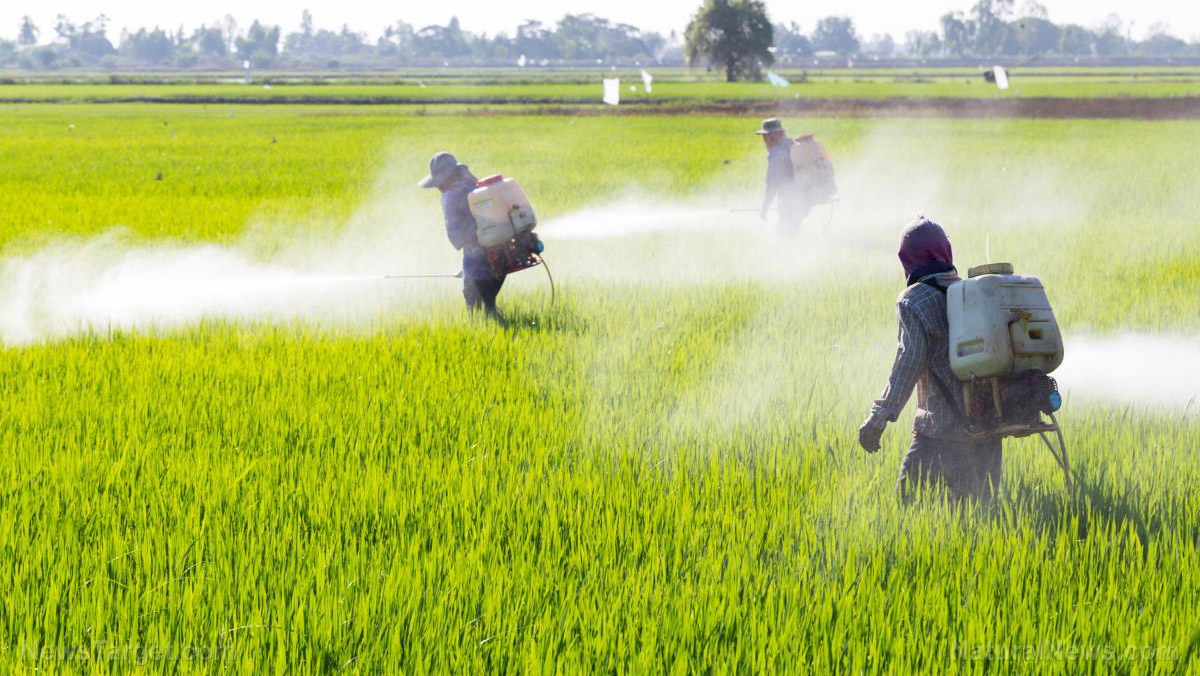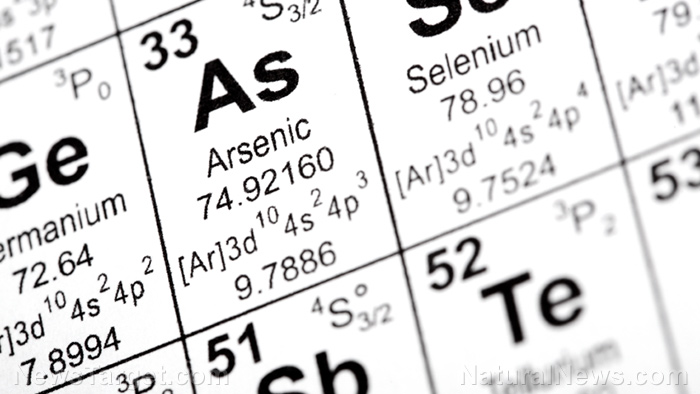Amitraz — toxicity, side effects, diseases and environmental impacts
11/29/2017 / By Earl Garcia

Amitraz is classified as a triazapentadiene compound and is a widely used insecticide and acaricide. An entry posted on the Extension Toxicology Network website notes that the chemical is primarily used against red spider mites, leaf miners, scale insects and aphids. Likewise, the insecticide eliminates bollworms, white fly and leaf worms. Aside from its agricultural application, the chemical is also utilized to rid livestock of ticks, mites, lice and other animal pests.

List of known side effects
An article posted on the Pesticide Action Network North America (PANNA) website stresses that amitraz may cause reproductive and developmental toxicity, neurotoxicity and acute toxicity. The entry also cautions that ingesting the harmful chemical is detrimental to cardiovascular health. According to the article, amitraz ingestion may lead to slow heart beat and low blood pressure levels. The PANNA entry adds that chemical exposure may lead to sedation and low body temperature.
Likewise, previous animal studies have revealed that amitraz exposure may result in tumor growth in the lungs and lymph nodes. The toxic insecticide is also found to wreak havoc on metabolism and digestive health. Amitraz is shown to affect the function of the hypothalamus and the release of various hormones. This, in turn, results in reduced food intake and stunted growth. Moreover, direct skin exposure is found to cause transient skin flushing.
An entry published on the Pub Chem website has also revealed that the hazardous insecticide may contaminate water sources and impact aquatic ecosystems and animals. Likewise, amitraz is known to contaminate the soil and ground water. The harmful compound is also highly toxic to birds and other beneficial insects such as honeybees.
Body systems affected by amitraz
Amitraz is known to compromise cardiovascular health. Likewise, the harmful chemical may affect the endocrine system, lymphatic system and the respiratory health. The toxic insecticide is also detrimental to the skin, the digestive tract and the central nervous system.
Items that can contain amitraz
Amitraz is commonly available in emulsifiable concentrate, wettable powder or a pour-on powder formulations. A vast number of brand name insecticides contain amitraz. These trade products include Aazdieno, Acarac, Amitraze and Baam as well as Edrizan, Mitac, Maitac and Triatox. The harmful chemical can also be found in Triatix, Vapcozin, Taktic, Triazid and Topline. Other amitraz-containing brands include:
- Tudy
- Ectodex
- Garial
- Danicut
- Ovidrex
- Acadrex
- Bumetran
- Ovasyn
How to avoid amitraz
A safety data sheet published by the National Institute for Occupational Safety and Health (NIOSH) suggests wearing protective clothing, gloves and respiratory equipment to reduce the risk of amitraz exposure. The data sheet also recommends that workplaces install adequate ventilation to lower the odds of chemical exposure. Likewise, the guidelines advise that people exposed to the harmful chemical should be taken to an area with fresh air. Victims are advised to thoroughly wash the eyes and affected skin area as well. The safety guidelines also suggest that the chemical be swept into a moistened container should an accidental spill occur in order to prevent dusting and subsequent inhalation.
Where to learn more
- AUTONOMOUS PLANES now weaponized as pesticide delivery platforms to inundate farmland with toxic chemicals
- Bug spray chemical can build up in your home and cause dizziness and brain function problems, scientists find
- Texas carpet bombs its own hurricane-traumatized victims with neurological poisons sprayed from military planes
- Autism, brain and CNS disorders overwhelmingly linked to people in close proximity to pesticide spraying
- Chemically induced autism? Scientist discovers pesticides, fungicides lead to neurodegeneration in test subjects
Summary
Amitraz causes reproductive and developmental toxicity, neurotoxicity and acute toxicity.
Amitraz exposure leads to slow heart beat, low blood pressure levels, sedation and low body temperature.
Amitraz raises the odds of hypothalamus dysfunction, digestive woes and skin irritation.
Amitraz is detrimental to the heart, the lymph nodes and the endocrine system.
Amitraz affects the skin, the central nervous system and both the respiratory and digestive tracts.
Sources include:
Tagged Under: Amitraz



















